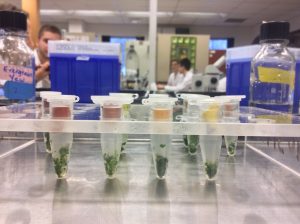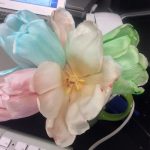 First year at university is tough for students. The transition from high school to university is a shock to the system of young people entering a system where deadlines come with consequences. There are complex schedules to juggle, and no one checks to see if you are showing up at lectures (at least not by name).
First year at university is tough for students. The transition from high school to university is a shock to the system of young people entering a system where deadlines come with consequences. There are complex schedules to juggle, and no one checks to see if you are showing up at lectures (at least not by name).
But, in my opinion, AND that of MANY students, the second or sophomore year of York University's undergraduate biology programme is even tougher. This heavy year is packed with high content laboratory courses: Animal and Plant Biology, Genetics, Biochemistry.
Reading, memorization and test-taking are the order of the day. Doing well in these courses is essential for students hoping to go on to professional programmes.
Since 2014, when I reprised my full Biology teaching load, after several years away from it, I encountered students in my 4th year courses, who told me how much they disliked the second year Plant Biology course BECAUSE of its tricky tests.
When I taught BIOL 2010 from 1991-97, I eliminated the complicated multiple-multiple choice questions. I used straightforward multiple choice tests with 1 correct answer out of a possible 5. I had found that asking students to pick out answers from complex combinations of possibly correct answers created tremendous confusion, had no clear pedagogical benefit, and diverted attention away from the course content onto the course format.
After I stopped teaching Plant Biology in 1997, a subsequent course director re-instated the multiple-multiple choice tests. So, when I returned as course director in 2016, I brought back my 1990s simpler multiple choice question policy.
The biodiversity covered in the course is pretty complex, as I mused in an IRIS blog post, when I stepped in to teach Plant Biology when the course director went on sabbatical in 2009-10. I truly want students to focus on the material in the wonderful text book, Raven Biology of Plants, the topic of my next blog post, instead of stressing about the test format.
What I DO want students to take away from Plant Biology
Learning to take good notes and read the text book are important transferable skills. BUT, the main learning outcome that I desire for my students in Plant Biology (the course formerly known as Botany), is to leave it, thinking:
"I ❤️ autotrophs. Plants are awesome, the earth's biodiversity is amazing, photosynthesis is crazy, and whoa, I'm an opistho-what?"
The 3 main concepts that I want all students to know by heart, at the end of the course:
1) How eukaryotes evolved from prokaryotes: endosymbiotic theory!
When I was a second year undergraduate student at the university of Toronto, I heard Lyn Margulis give a research talk on what was then, her proposal for how organelles like chloroplasts actually evolved. Now, it's in every text book! That talk was the first time that I realized how science is a process, and it, too, evolves. Recently, Emmanuelle Charpentier spoke at York University about CRISPR. I was delighted to see so many undergraduates at her lecture.
2) 3 basic kinds of life cycles with sexual reproduction and meoisis
We cover all of them in this course. Sexual reproduction in diploid animals -- known as gametic meiosis -- is way more simple, and boring than sporic meiosis found in plants and some protists. Sporic meiosis includes the very cool alternation of generations -- what? And, yes, there is also zygotic meiosis, in which the multicellular phase is haploid.
3) All about autotrophs, photosynthesis & chloroplasts
That autotrophs evolved AFTER heterotrophs always freaks students out. Learning about photosynthesis includes learning about why plants turn amazing colours in the Fall.
It's my enduring hope that Fungi (there's a cool one below), which are Opisthokonts and heterotrophs, and which are traditionally taught in Botany courses, will, soon be transferred to Animals. I know that is about as likely to happen as all my students showing up in every lecture.
 In my Plant Biology course, we also learn about secondary compounds, poisonous plants, and how to create a fungus-bacteria ecosystem with SCOBYs. Yes, we brew kombucha, and test how dyes can illustrate plant vascular systems.
In my Plant Biology course, we also learn about secondary compounds, poisonous plants, and how to create a fungus-bacteria ecosystem with SCOBYs. Yes, we brew kombucha, and test how dyes can illustrate plant vascular systems.
 In our Plants course, I encourage students to look at how plants are included in stories. I ask bonus test questions based on Pipe Dreamzzz, an episode of Murdoch Mysteries, in which a student mistakenly dies from a mysterious plant alkaloid, which smoking opium. It turns out that the professor is the intended victim!
In our Plants course, I encourage students to look at how plants are included in stories. I ask bonus test questions based on Pipe Dreamzzz, an episode of Murdoch Mysteries, in which a student mistakenly dies from a mysterious plant alkaloid, which smoking opium. It turns out that the professor is the intended victim!
Learning and teaching about Plant Biology is challenging, but fun
Teaching a course that covers all forms of life, from prokaryotes to eukaryotes, except Animals, is demanding, but is also fun. One of the coolest things has been using one of the best text books in science, Raven's Plant Biology, first as a student, and then a professor. My next post is all about this wonderful text.


